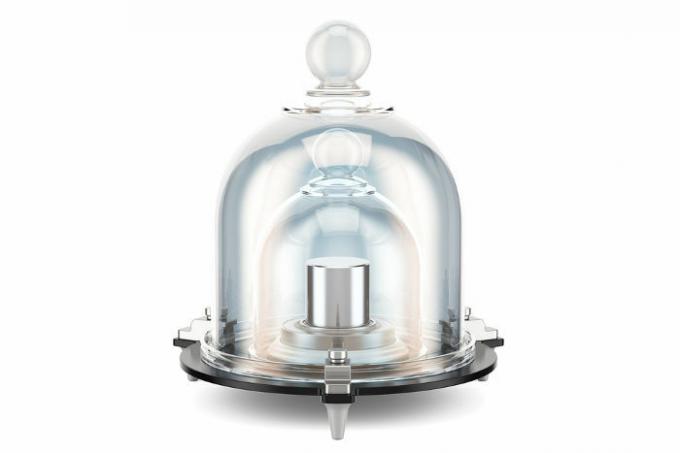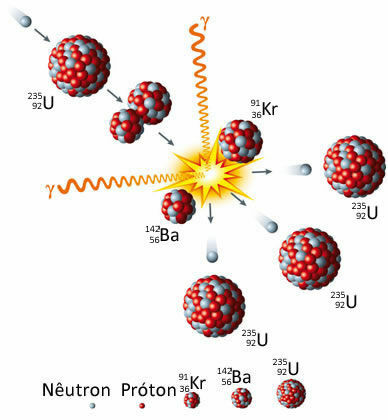Mol is a unit of measurement used to express the amount of microscopic matter, such as atoms and molecules. It is a term that comes from the Latin soft, which means quantity, and was first proposed in 1896 by chemist Wilhem Ostwald. However, it was Amedeo Avogadro who suggested, in 1811, that the same amount of different matter would have the same amount of molecules, which was called Avogadro's Constant.
It was only in the 20th century, after studies by chemist Frances Jean Baptiste Perrin, that scientists were able to determine the amount of matter present in a mole, which is:
6,02.1023 entities
Based on this knowledge, it was possible to determine the amount in one mole of any matter or component of the atom (such as electrons, protons and neutrons). See the following cases:
1 mole of beans = 6.02.1023 beans
1 mole of cell phones = 6.02.1023 cell phones
1 mole of reais = 6.02.1023 real
General uses of the mol unit
The term mol can be used for any matter or component of it, but it is most commonly used in the study of quantities related to atoms, molecules and atomic components.
a) For chemical element
Whenever we are working with chemical element (set of isotope atoms), we should use the following expression:
1 mole of an element = 6.02.1023 atoms of this element
Example: Copper Element (Cu)
If we have one mole of copper, then we have 6.02.1023 copper atoms.
b) For molecules
Whenever we are working with a polyatomic substance (formed by the interaction of two or more atoms), which is a group of identical molecules, we should use the following expression:
1 mole of any substance = 6.02.1023 molecules
Example: Water (H2O)
If we have one mole of water, we will have 6.02.1023 water molecules.
Relations with the mol unit
As the mol unit is used to express the amount of matter (and matter is everything that occupies a volume and has mass), we can relate the mol of any matter with its mass, just as we can determine the volume (provided the matter is in the gaseous state) that a matter occupies from the mol.
Mind Map: Mol

To download the mind map, Click here!
a) Mol-to-mass ratio
The relationship between mol and mass depends on the atomic mass (found in the Periodic Table) of an element or the molecular mass of a substance. When related to the mol, both the atomic mass and the molecular mass are worked in the gram unit, as in the following examples:
Do not stop now... There's more after the advertising ;)
Example 1: Copper element (atomic mass 63.5 u)
It is known that one mole of copper has 6.02.1023 copper atoms and that the element's mass is 63.5 u, thus, in:
1 mole of copper 6.02.1023 copper atoms weighs 63.5 g
Example 2: Substance H2O (molecular mass 18 u)
It is known that one mole of water has 6.02.1023 molecules of water and that the mass of the molecule is 18 u, thus, in:
1 mole of H2The 6.02.1023 H molecules2The weighs 18 g
b) Mol to volume ratio
When matter is in a gaseous state, we can determine the space occupied by any molar quantity of matter. This is possible because the same amount in moles of gaseous matter always occupies the same space, which is 22.4 L.
1 mole of gaseous matter occupies 22.4L
Example 1: Argon element (atomic mass 40 u)
It is known that one mole of argon has 6.02.1023 argon atoms and that the element's mass is 40 u, thus, in:
1 mol of argon 6.02.1023 argon atoms occupies 22.4 Lpesa 40g
Example 2: Ammonia (molecular mass 17 u)
It is known that one mole of ammonia has 6.02.1023 molecules of the substance ammonia and that the mass of the molecule is 17 u, thus, in:
1 mole of NH3 6,02.1023 NH molecules3 occupies 22.4 Lpesa 17 g
c) Example of calculation involving mol
From the mole, we can calculate the mass, volume, number of atoms and number of molecules of any substance. See an example:
Example: (FCC-BA) The mass of an acetic acid molecule, CH3COOH, is: (Given: molecular weight of acetic acid = 60 u)
a) 1.0. 10-21g
b) 1.0. 10-22g
c) 1.0. 10-23g
d) 1.0. 10-24g
e) 1.0. 10-25g
Resolution: The acetic acid substance has the formula CH3COOH and molecular mass equal to 60 u. Thus, we can relate this data to the mol unit as follows:
1 mole of CH3COOH 6.02.1023 CH molecules3COOH weighs 60 g
To determine the mass of a single molecule in grams, just build a rule of three from the expression proposed above, as shown below:
1 mole of CH3COOH 6.02.1023 CH molecules3COOH 60 g
1 CH molecule3COOH x
60.1 = 6,02.1023.x
x = 60
6,02.1023
X = 9,966.10-23
or, rounding:
X = 10.10-23 or X = 1.10-22
By Me. Diogo Lopes Dias



